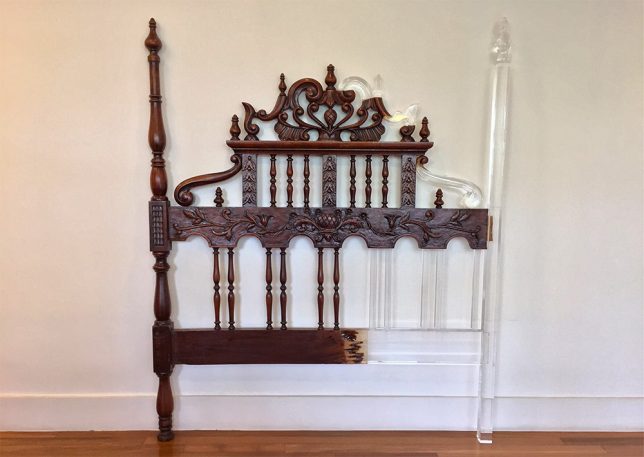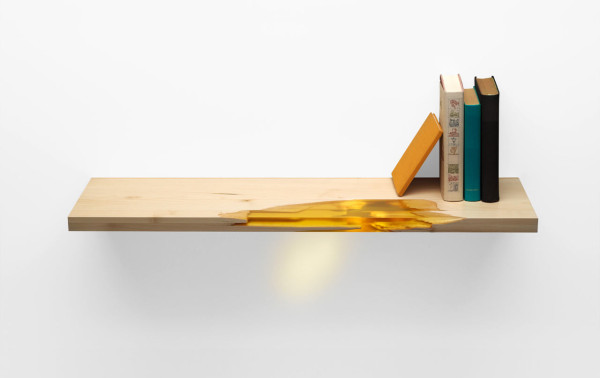You really can’t tell whether a camera is any good just by looking at it. Some people do indeed think that they can, but they will be people who admit quite openly that they know nothing about cameras. To those unfamiliar with the market, and the reasons we need different body shapes, some cameras will simply look more ‘professional’ than others. And bigger cameras will inevitably be considered much more serious than those whose designers have gone to great lengths to make compact.
Colorful cameras are obviously less credible than ones that have silver bits on them, and infinitely less credible again than ones that come cloaked entirely in matte black. Chrome and silver can make some believe the subject of their gaze is antique, and those that have no fancy knobs or shiny bits may be considered simply old-fashioned.
Our use of Leica rangefinders when I worked as a cruise ship photographer prompted more than one jolly passenger to remark that there seemed to be no relationship between the extortionate prices the company charged for pictures and the state of the old-fashioned equipment we were forced to use. The passengers believed that our featureless, sparkle-less, prism-less, block-shaped cameras, that we had to focus ourselves, were relics of a former era. That indeed we were using M4s in 1991 instead of the M6s of the day is neither here nor there, as they essentially both look as ancient as each other. When we explained that these cameras cost of lot of money the response was generally that perhaps we should take our mother shopping with us to avoid being ripped-off.
It’s expected that the uninitiated will make quick decisions about a camera just by the way it looks, and in many cases to base a buying decision on its visual credentials. Serious enthusiasts and professional photographers would never do that of course. That’s why all camera brands design their cameras to look plain and unexciting.
I’m just looking, dear
As much as the more sensible of us declare that all their camera equipment purchases are grounded in logic, there are very few of us that cannot be influenced by the way a camera looks. That doesn’t mean we have to buy the best looking model, but I think that most of us will at least admire the style of the new Olympus PEN-F.
Those milled dials on the top plate and the neat flared appendage on the port-side forward facing are undeniably attractive. They may even create a twitching credit card in the pockets of those who had no prior idea they were in the market for a new camera. The clunky metallic dials may not represent the practicality of some other ways of working, but they certainly make for a more appetizing visual than a collection of black finger wheels ever could.
Olympus’ repurposing of the film rewind post, with its gnarled head, to become the on/off switch, is a clever piece of work that lends the whole design a convincing impression of both heritage and originality, rather than looking like just another retro reproduction.
Creative license
It is ironic perhaps that the design of 2016’s PEN-F has very little in common with the original model. That it has a lens and is available with a chrome or black top are about the only similarities. In my opinion, the PEN-F of 1963 was actually less than absolutely gorgeous unless decorated with ‘Hollywood’ lighting, used in a classy portrait or featured in a period drama.
‘the new PEN-F is left looking more like the love-child of the Leica lll than it does anything from the Olympus archive of the early 1960s’
The rather-too-long top plate of the original makes the lens appear off-balanced compared to the central mount and active top plate of the 2016 model. The original also had no dials on the top plate and the action required to rewind a film was achieved with a crank handle rather than a gnarl-headed post. Olympus generally didn’t use big top-plate shutter speed dials until the OM series of 35mm SLRs, and it ran out of the gnarl-headed rewind posts after cameras like the 1948 35 1 – the first 35mm camera to be sold in Japan.
So in the new PEN-F what we are looking at is some historical fiction rather than a recreation. But that’s OK, history often looks much better with a heavy dose of make-believe – just ask Asterix and Obelix.
While the link between the new and old PEN-F models might not be as strong as it is between the original Leica MP and the ‘modern’ MP, I don’t think anyone is going to lose any sleep over it. The point is that the new model is very good looking, and good looking gets attention from photographers and ultimately helps to sell cameras.
Looks versus logic
 |
| The Fujifilm X100 – massively popular even before it had been tested, and fortunately just as popular afterwards! |
Fujifilm might have a fantastic X-Trans sensor in its X-series cameras, but I expect a good many of those X-T1 and X-Pro1 bodies sold because they look so cool. I know there were enormous back orders for the X100 even before it had been tested by anyone, which demonstrates that plenty of people were prepared to put their money down even before they knew if the camera was any good.
The strength of the X series design has even outweighed the widely acknowledged sluggish AF performance of some of the models, and we hear proud owners making excuses as though for a fondly looked on three-legged dog. ‘Yeah, I know the AF isn’t that great, but it’s such a beautiful camera. I love using it.’ Like the Sirens of Greek mythology, the intoxicating curves of a well-toned camera body can prove a powerful draw to a normally logical person.
I suppose a company’s heritage can reduce the risk of a good looking camera performing badly when you buy before you try, and it’s reasonable enough to expect that the PEN-F will operate as well as the OM-D bodies and the top-tier of the current PENs (and our initial impressions have been positive). More importantly perhaps there is no reason for us to think that it will NOT perform at least just as well.
A wolf in wolf’s clothing
It will be interesting to see how sales of the PEN-F compare with those of Panasonic’s Lumix DMC-GX8. It is after all very similar in terms of key specification – probably the same sensor, enhanced touch functions including touch-pad AF, the same viewfinder position (minus the articulation) and the same lens range to choose from. In fact, the bodies are so astonishingly similar that the PEN-F looks more like a stylish adaptation, or a flattering imitator, than a competitor – but to my eye at least the PEN, with its contours, layers and more rounded feel takes the beauty pageant rosette. The designers have done a great job.
A camera has to perform, of course, and it won’t sell well otherwise, but an eye-catching design that appeals to the right audience is an important differentiator and often what gets the product noticed, mentioned in the press, remembered by the public and purchased in a crowded market.
With all things being mostly equal – except that Olympus has more heritage in the camera market, and Panasonic has 4K and a head-start – I suspect that it will be on looks that most people make the choice at the camera counter between the GX8 and PEN-F.
Not for the first time
 |
| The O-Product, from 1988 |
Olympus has had quite a history of designing original and cool-looking cameras, and I suspect its success over the years has been as much down to the person wielding the drafting pencils as it has the people with the spanners and screw-drivers. Outstanding creations from the archive include the O-Product, the Ecru, the delightful XA and the Mju and Mju-mini digital cameras. My teenage son bought a Trip 35 from an online store that restores and re-covers them, and he thinks it is one of the coolest cameras ever made – to the best of his knowledge, of course. The model he has was likely created 20 years before he was – a better example of enduring design would be hard to find.
 |
 |
| The Olympus Trip 35 was in production for twenty years, and sold 10 million units from its introduction in 1968 |
The XA series was popular for its looks and bolt-on flash unit as well as for its sophisticated controls. Launched in 1979 the XA4 was the last model, going on sale from 1985 |
Is it OK to buy and love a camera because of the way it looks? Yes and no. If you buy only because of the way it looks you are about to risk your money, but if style and grace sway you from one good product to another that’s probably alright. I guess it is a question of why we take pictures and why we are into photography. Some people like their cameras more than they like taking pictures or looking at the pictures they take, while for some the end result is the be-all and end-all of the process and anything beyond pure functionality is extraneous.
Most people can find a balance between the two – we buy the best we can, and can give ourselves permission to enjoy the way our equipment looks. Photographers are supposed to be creative people, and creative people like looking at and using nice things. We can choose to remember that there are many reasons for getting into photography and many for continuing to take pictures, but for most of us it is supposed to be enjoyable. We don’t all have to be seduced, but we can allow ourselves to admire some beautiful design, whether for you that’s the PEN-F or a Canon Rebel. Either way, Olympus is certainly going to cause a stir with this new design, just as it has done so many times before.
Articles: Digital Photography Review (dpreview.com)


























































 Extra photos for bloggers: 1, 2, 3
Extra photos for bloggers: 1, 2, 3












You must be logged in to post a comment.